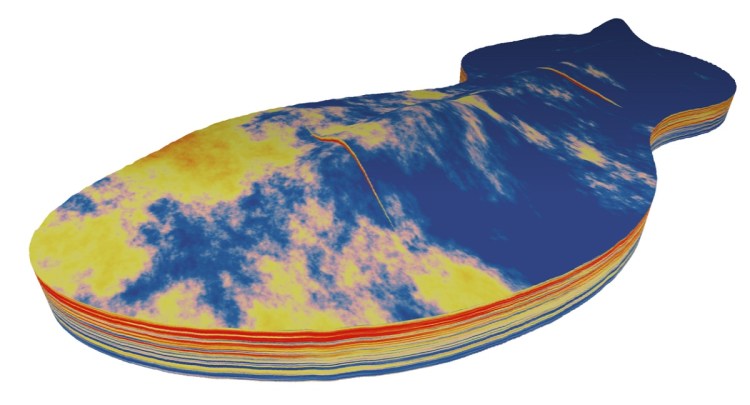IBM and Stone Ridge Technology said they have hit a new milestone in reservoir simulation to improve exploration and data output. Working with Nvidia, the companies shattered previous results using one-tenth the power and 1/100th of the space in a supercomputing application for oil and gas exploration.
A computing system with Nvidia’s graphics processing units (GPUs) was able to simulate one billion cell models in a fraction of the time, while delivering 10 times the performance and efficiency than legacy central processing unit (CPU) codes. And that can save oil and gas companies a lot of money as they search for more resources underground.
The breakthrough achievement used 60 processors and 120 accelerators shattering the previous supercomputer record which used thousands of processors. The results aim to transform the price and performance for business critical High Performance Computing (HPC) applications for simulation and exploration.
Energy companies use this kind of computer simulation, dubbed reservoir modeling, to predict the flow of oil, water and natural gas in the subsurface of the earth before they drill. And that saves on financial and environmental risks.
June 5th: The AI Audit in NYC
Join us next week in NYC to engage with top executive leaders, delving into strategies for auditing AI models to ensure fairness, optimal performance, and ethical compliance across diverse organizations. Secure your attendance for this exclusive invite-only event.
“This milestone calculation illuminates the advantages of the Minsky OpenPower GPU architecture.” said Sumit Gupta, IBM Vice President, in a statement. “The bottom line is that by running Echelon on Minsky, users can achieve faster run-times using a fraction of the hardware. One recent effort used more than 700,000 processors in a server installation that occupies nearly half a football field. Stone Ridge did this calculation on two racks of IBM machines that could fit in the space of half a ping-pong table.”
A billion-cell simulation is extremely challenging due to the level of detail it seeks to provide. Stone Ridge Technology, maker of the Echelon petroleum reservoir simulation software, completed the billion-cell reservoir simulation in 92 minutes using 30 IBM OpenPower servers equipped with 120 Nvidia Tesla and Nvidia Tesla P100 GPU accelerators.
“This calculation is a very salient demonstration of the computational capability and density of solution that GPUs offer. That speed lets reservoir engineers run more models and ‘what-if’ scenarios than previously so they can produce oil more efficiently, open up fewer new fields and make responsible use of limited resources” said Vincent Natoli, president of Stone Ridge Technology, in a statement. “By increasing compute performance and efficiency by more than an order of magnitude, we’re democratizing HPC for the reservoir simulation community.”
IBM said that the latest advance challenges misconceptions that GPUs could not be efficient on complex application codes like reservoir simulators and are better suited to simple, more naturally parallel applications such as seismic imaging.
“The energy industry was among the first to adopt GPUs for numerical modeling, using them to accelerate seismic processing,” said Marc Hamilton, vice president at Nvidia, in a statement. “They are now making a powerful impact on reservoir simulation, and we expect this to drive further efforts to utilize GPUs for other computationally intense workflows in the oil and gas sector.”


